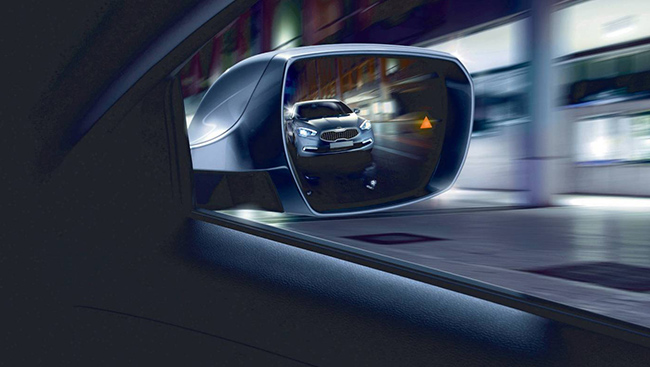If it’s been awhile since you last sat in a brand new car, truck or SUV, you may be amazed to find yourself surrounded by nearly as many buttons, lights and switches as in an airplane cockpit. Mostly controlling devices to keep you safe, what do all the succession of letters that read BLIS, LDW, FCM and so on actually mean? Luckily, here is our guide to new vehicle safety technology giving you a heads up on what exactly is what.
Lane Departure Warning (LDW)
Have you noticed at times when you’re driving while tired and/or distracted, you can have a tendency to drift out of your lane? Lane Departure Warning systems typically use cameras to monitor your vehicle’s lane position, and provide audible and visual alerts if you’ve deviated from your path and no turn signal use has been detected. On some cars like the Audi Q7, the steering wheel will also vibrate providing further warning.

Lane Keeping Assist (LKA)
If you’d rather let the computer do all the work, Lane Keeping Assist goes one step further than LDW. Acura’s LKAS, optional on the MDX (enough acronyms yet?) and others, shares the same onboard camera technology but will apply light steering input to keep the crossover inside the lane its currently traveling on. A continuous beep will also be sounded in case you haven’t noticed that the steering wheel is moving on its own.
Forward Collision Mitigation (FCM)

This safety system is used for minimizing the likelihood or severity of a frontal crash. If the vehicle detects – based on speed and positioning – that a forward-facing impact is imminent, the driver will be alerted and the brakes will be applied automatically if nothing is done. Subaru’s version utilizes stereo cameras mounted above the rear-view mirror and is dubbed Pre-Collision Brake Assist, part of their EyeSight suite available on new models like the Outback, Legacy and Forester.
Adaptive Cruise Control (ACC)

Cruise control is great for long trips on the highway, but it can also prove tiring when there are other vehicles on the road causing you to have to constantly slow down and speed up. The German makers responsible for performance machines like the 911 and Cayman have a Porsche Active Safe (PAS) option that regulates your speed according to the distance between your vehicle and the one in front when cruise control is set. A radar sensor monitors the road ahead and will restrict the throttle or gently apply the brakes accordingly, even coming to a complete stop if necessary.
Blind Spot Detection (BSD)

Different vehicle manufacturers have various names for this feature that detects when objects are in the driver’s blind spot area. Volvo calls theirs BLIS for Blind Spot Information System that is based on radar sensors located in the rear corners of the car behind the bumper cover. The sensors continually scan the area behind and beside the vehicle, warning the driver when something is detected by flashing an LED indicator near the windshield.
